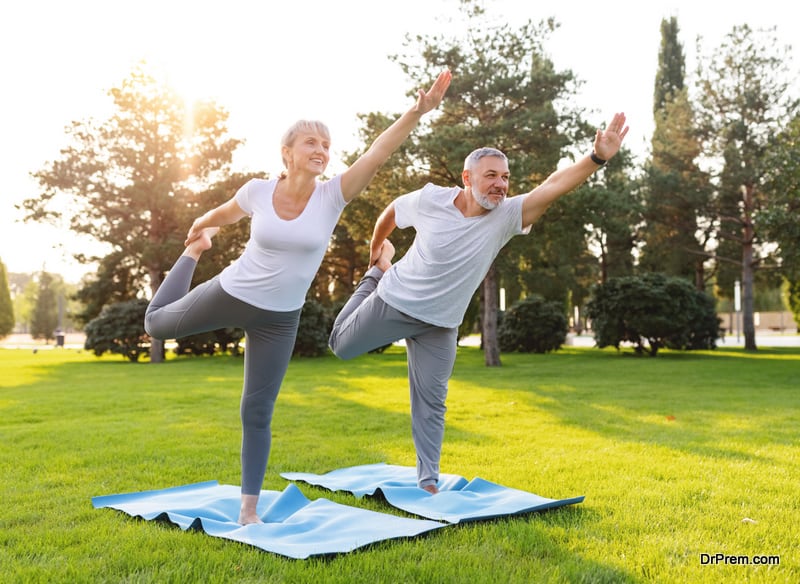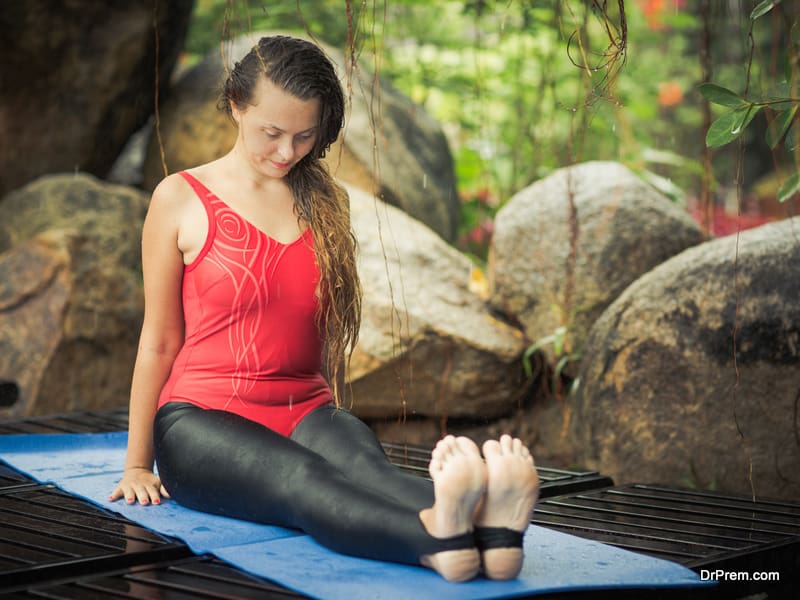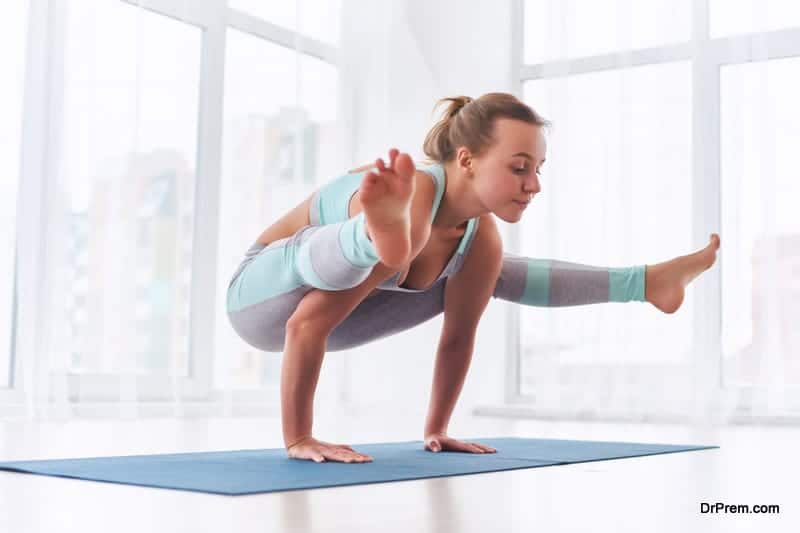The scope of Yoga has finally bypassed the confines of a seemingly esoteric Eastern practice. The Y word is now commonly and righteously associated with fitness, both on the mental and physical level. And, as paragons of our pop culture, there are a few celebrities who have taken Yoga to a whole new spiritual level. You too can practice the best yoga poses to stay in shape and start a whole new wellness routine in your life.
In this guide you will read about:
Guide To The Best Yoga Poses To Stay In Shape – Best Poses And Practices And Useful Tips
-
How to make a brand new you by adding Yoga to your life?
-
Is yoga to stay in shape viable for you?
-
Do you know these famous celebrities who do yoga to stay in shape?
-
Can only skinny people practice yoga to stay in shape?
-
What are the yoga poses you can practice anytime and anywhere?
-
How can you practice Yoga with a paddleboard prop?
-
How do you use Yoga blocks to stay in shape?
-
What is a Yoga Block?
-
What are the uses of Yoga blocks?
-
Enjoy a fit life with Kriya Yoga
-
What are the yoga poses that help swimmers increase their flexibility?
-
All you need to know about Staff Pose or Dandasana
-
How Yoga differs from Pilates?
-
Do you know things you probably doing wrong in yoga to stay in shape?
-
What are the Tips to Improve Your Yoga Practice to stay in shape?
How to make a brand new you by adding Yoga to your life?

Yoga has innumerable benefits and this is why people desire to make it a part of their lives but few people doubt that yoga is not suitable for elder people, say who are above 50 years of age. Well, this is untrue, as yoga is equally beneficial for all ages. To clear this doubt and to find out some hidden benefits of yoga, continue reading.
Is yoga to stay in shape viable for you?

With age, the limbs and joints develop pains and other problems, and you can find relief with stretching yoga exercises. The stretching improves flexibility of joints, makes bones stronger, takes away pains, and improves mobility. If you have a serious condition like arthritis, heart disease, or a slipped disc then you must consult your physician before you start practicing yoga, as not all yoga postures are for you.
A new you— what are the psychological benefits of yoga?

Psychiatrists prescribe anti-depressants that are effective but have some side effects as well. However, yoga is a practice that is helpful in treating without causing any harm to the body. Yoga cures the negative state of mind and makes a person feel normal; the same effect psychiatrists try to create with the help of antidepressants. Yoga makes people enjoy a positive state of mind, and a blissful life.
Unlike some other exercises that are age-restrictive, yoga is a practice that suits all ages. It has so many health benefits that people world over love practicing it.
Do you know these famous celebrities who do best yoga poses to stay in shape?
Let us check out how serious some of the well known personalities are in their very own personalized Yoga sessions.
1. Madonna

2. Gisele Bundchen
Working out and straining yourself physically is all well and good when it comes to maintaining a figure. However, the Brazilian supermodel also believes in the mental side of affairs. And that is why Gisele Bundchen gets up every morning at four to practice Anusara yoga. Combining Hindu spiritualism with some healthy physical habits, this yoga form poses as the ‘collective art’ of exercising.
3. Gwyneth Paltrow
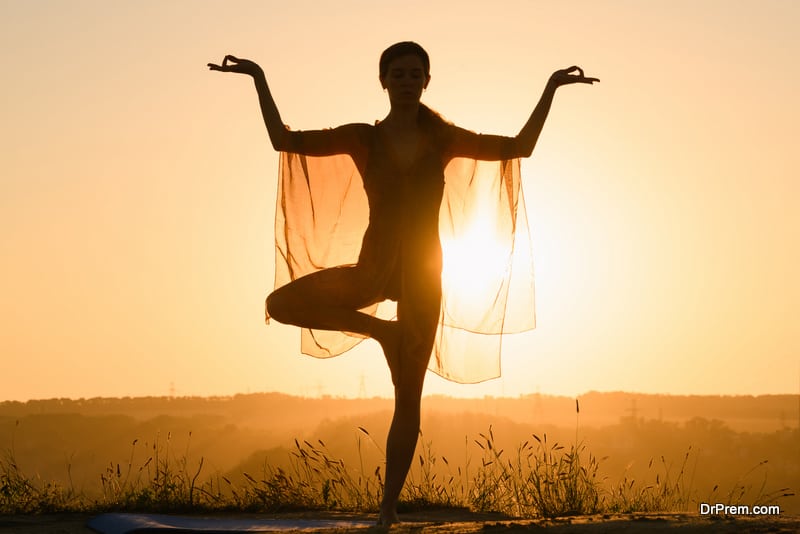
4. Jenny McCarthy
Yes, she may not be some A-list celebrity, but when it comes to curvy yet refined physique, nobody beats Jenny McCarthy. A serious proponent of yoga for the last three years, the more important news is that the blonde bombshell helped funnyman Jim Carrey to shed over a whopping fifty pounds from just yoga exercises.
5. Robert Downey Jr.
Add power-flow yoga advocate to the list of ‘genius, billionaire, playboy, philanthropist’. Yes, our very own Iron Man has been dabbling with motley of exercising forms over the years. This fusion pack features various yoga techniques, massage therapy, healthy herbs and even martial art features. Of course, the whole course is flavored with the unique quirkiness only Robert Downey Jr. could bring to the table.
6. Woody Harrelson
Actor extraordinaire Woody Harrelson is a firm believer in the dictum of yoga improving our love lives. According to the actor, yoga helps us to traverse the constraints of both our mental and physical self, thus enhancing our capacity to appreciate our partner’s form. And, beyond just poetic considerations, it also keeps us in good shape.
Can only skinny people practice yoga to stay in shape?

There is no need to suffer from body dysmorphia. It is more important to remain healthy and feel positive about yourself. Yoga can help you feel good about your body, and make you calm from within. Yoga invigorates you, no matter what your body size is. In fact, if you are overweight, or do not have very flexible body, practicing the best yoga asanas for weight loss will help you improve your physical fitness.
Do not get discouraged if you find you cannot do all the poses to the perfection. If you have potbelly, you may not be able to bend completely, some people cannot sit on the floor. The beauty of yoga is that it is all encompassing. People of all age, gender or physique can benefit from yoga. You can use simple modifications to help you perform the exercises according to your capability. Over time, you will build flexibility and stamina to do exercises that are more difficult.
In addition, size people may find it difficult to sit on the floor. They can sit on the chair. If comfortable, you can sit on a pillow. Individual modifications will make these poses more enjoyable and safe. If you get tired soon, you can repeat an exercise only few times. Even performing yoga for a short duration can help you stay fit and boost your mood. You can get rid of body aches, as you can strengthen your muscles by performing certain exercises. Yoga not only reduces tensions but also help you get rid of joint aches. Breathing exercises increase your stamina. Often overweight people become breathless very soon. By practicing Pranayama, you can improve your breathing. Meditation helps in calming you down and relieving you from mental tensions.
It is very important to find a yoga instructor to help you in the beginning, someone who understands your body and gradually guides you to attain better fitness. Physical wellbeing cannot be measured by counting calories. At the end of practicing yoga, you should feel healthier and more relaxed.Yoga classes offered at any wellness retreat in India will help you relax and rejuvenate.
What are the yoga poses you can practice anytime and anywhere?

Chair Twist

Mountain Pose
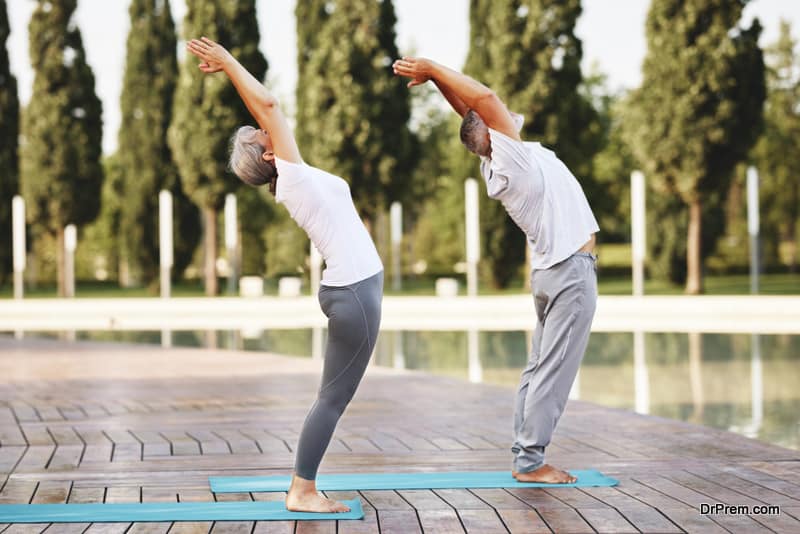
Deep Breathing
This one comes handy when your office environment starts getting onto your nerves. The Deep breathing technique helps you relax and calm down. It is such a great stress buster that can take away any kind of stress within few minutes, enabling you to concentrate and behave in a normal manner once again. Breathing techniques of yoga are absolutely doable in an office environment, even right there sitting at your desk if you choose to do deep breathing while sitting on your chair. If the environment allows you, take a mat to sit down and then do the breathing, if not, then breathing on chair is as good as sitting down. Deep breathing is one of the best yoga asanas you can do everyday.
Revolved Triangle Pose (parvrtta trikonasana)

Dancer Pose
There are a number of dancer pose variations, so pick the one you can do the best in the environment around you. An ideal pose to perform when your body starts craving for an overall stretch that could open up your body and recharge it.
Tree Pose
One pose that you can perform literally anywhere without any difficulty. Choose a spot and stand tall in a Mountain Pose while fixing your eyes on some spot in front of you. The fixing of eye is necessary, as it enables you to balance. Pick your left leg, bend it from the knee and place its foot on the inner side of your right leg. Bring your palms together in front of your chest and join them. Hold this posture for some time and then repeat it with the other leg.
Majority of people today complain that they do not get time to relax and exercise owing to their super busy schedules. In such a situation, people must practice certain yoga poses that one can perform at any time during the day and at any place and reap its health benefits.
How can you practice Yoga with a paddleboard prop?
Looking at the amazing benefits of yoga on body, everybody is making it a part of their lives. The reason that many people adopt yoga in their lives is due to its soothing effects on mind and body. Besides being so good for health, an amazing stress buster that helps relieve the mind from useless things.
When yoga combines with natural elements like water, fresh air, and sunshine, creates magical effects on the bodies. The combination of natural elements and yoga gives the feeling of relaxation and peace. Yoga on paddleboard is one such way to get in touch with nature while doing yoga.
Yoga on paddleboard is a natural way to stay healthy. Being natural, it has so many good effects on our bodies. When practicing yoga on a paddleboard, it becomes more challenging to maintain the balance. It is quite hard to achieve that balance because the board is unstable. To achieve that stability, it needs more muscle work. And more muscle work makes the workout more challenging. Many yoga poses that one can practice on paddleboard are as follows.
Bow pose

Side plank
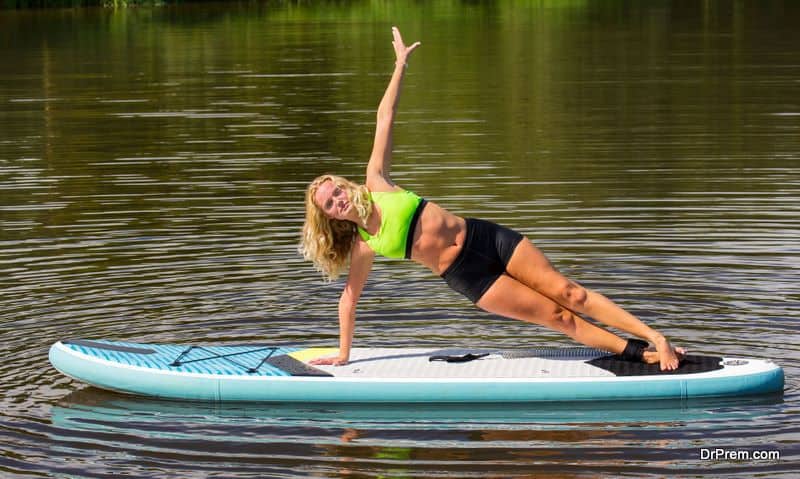
Scorpion
This is one of the hard exercises of yoga to do on paddleboard. But with practice and body strength, one can get perfection in this pose. It starts with placing forearms on the board with elbows, shoulder distance apart. Now lift one leg towards the head and when it is stable, move the other one following first. When both legs are on the top of the head, slightly lift the head and breathe. Doing this exercise needs a lot of strength, but it works mainly on abdominal muscles and legs that makes them even stronger.
Warrior II

Yoga on paddleboard improves balancing skills and strengthens the body and helps you to stay in shape. No doubt, paddling in and out is a great task in itself. And posing on board and on floating water makes it more interesting. If you are nature lover, then yoga on the board is a good idea to get in touch with nature
How do you use Yoga blocks to stay in shape?

What is a Yoga Block?

What are the uses of Yoga blocks?
- You can use the Yoga block for your forward bends. Sit straight and keep the block in front of you. Raise your hand above your head and then bow your body above the hip downwards. Touch the block and then slowly straighten your body.
- You can improvise the Triangle pose by using the Yoga block. For this you just have to place the block behind your feet. In the Triangle pose you are supposed to bend the upper half of your body backwards to hold your ankles with your hands. Many times tightness of our hip prevents us from keeping our body aligned properly while practicing this pose. If you bend and touch the block kept behind your feet, you will easily keep your body aligned proportionately.
- You can support your neck by placing the block beneath your head while doing meditation or performing postures, which puts pressure on the abdominal muscles.
- You can use the block also for the Pigeon pose. Here you can keep your body appropriately aligned by sliding the block beneath your hip and then stretching your upper body forward towards your thighs.
- For practicing the Bridge pose you can place the block between your knees to keep them from moving needlessly.
What are the benefits of using the Yoga blocks?
- The Yoga blocks help your posture and keep your body aligned while performing Yoga.
- They are used for support, especially by the beginners
- It keeps your muscles from getting hurt due to excessive stretching.
- You can improvise the Yoga poses according to your needs and capability with the help of the Yoga blocks.
- Your muscles are not strained.
- Helps in both strength and stretch exercises
Enjoy a fit life with Kriya Yoga

1. Energizing Exercises:
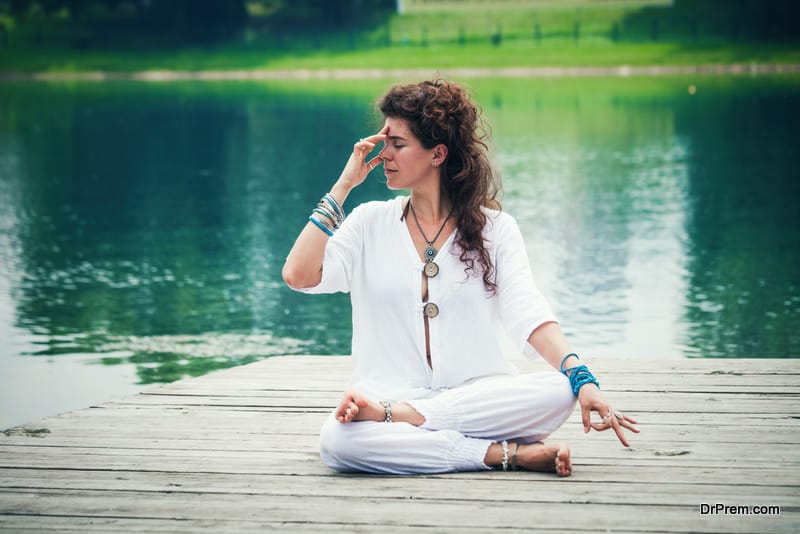
2. Hong-Sau Technique of Concentration:
In this kriya yoga technique, the hidden powers to concentrate are drawn out by eliminating external disturbances and pouring the energy on the thought of how to solve the problem at hand. The divine consciousness is explored by this technique.
3. Aum Technique of Meditation:

4. Kriya Yoga Technique:
Thespine and brain are considered as bark and root of the tree of life. Revitalizing and energizing the tree allows efficient flow of energy through the nervous system and organs.
The Kriya yoga technique helps in the revival of body’s immunity and ensures better functioning of the heart and lungs. The nervous system revitalizes as stress is relieved. The soul is free from the whirlpool of thoughts, emotions and worries and hence your body finds solace and serenity. The process has been elucidated by Lord Krishna in the scared Hindu book called “Gita,” which states that this technique is “offering inhaling breath into the outgoing breath, and offering the outgoing breath into the inhaling breath, the yogi neutralizes both the breaths. When he does so, the yogi releases the life force from the heart and brings it under his control.”
The person who wishes to invoke this art has to master the first three basic techniques of meditation in the first year of study. It’s equal to climbing a mountain and enough time has to be dedicated to adapt to the lifestyle.
As Babaji had predicted “Kriya Yoga, the scientific technique of god-realization, will ultimately spread in all lands, and aid in harmonizing the nations through man’s personal, transcendental perception of the Infinite Father.”, the prophecy did came to true with fitness DVDs and celebrities adopting the yoga technique for a happier and healthier lifestyle.
What are the yoga poses that help swimmers increase their flexibility?
Yoga has something for all. While a sartorial yoga practice could help golfers, athletes and runners strengthen their limbs, legs and have greater control over their reflexes, we’ve certain yoga postures for swimmers that improve their flexibility. However, swimmers need to practice diligently for achieving desired results.
Have a look at five yoga poses for swimmers that they should master to enhance their flexibility, conserve their energy, develop better balance, sharpen swimming skills and ultimately, boost their performance:
Pigeon Pose

Cow Face Pose
If you wish to stretch your hips, thighs, shoulders, ankles, armpits, chest and triceps, the Cow Face Pose or Gomukhasana is one mandatory pose.
Aside from helping you improve your swimming talent, it ensures fast relief from chronic knee pain and strengthens your spine and abdomen.
Seated Spinal Twist
Considering the fact that your spine supports every nerve of your body, it’s but important – obligatory for swimmers – to seek ways to strengthen it. The Seated Spinal Twist is the most effective yoga exercise for attaining spinal strength. While doing this pose, you actually affect the nerves of your whole body. It’s highly recommended to practice regularly and master the tricks of twisting and releasing your spine.
Cat and Cow Pose
Having a right posture can do wonders to your persona and associated swimming skills. Since swimmers have to curve their spine to maintain the perfect swimming posture, the Cat and Cow pose helps them have a supple, flexible spine and remove stiffness on neck and shoulders. While doing this pose, yoga practitioners should make sure not to bend their spine in the wrong direction. Moreover, it’s important to stretch the back and shoulder while pulling your tummy in.
Spinal Balance Pose

All you need to know about Staff Pose or Dandasana
Etymologically speaking, Dandasana derives its name from two Sanskrit words Danda and Asana, in which Danda means stick and Asana denotes posture. Also called as Staff Pose, Dandasana forms the basis of all seated yoga poses including forward bends and twists. Those who wish to reap the rich benefits of Staff Pose should do Adho Mukha Svanasana and Uttanasana before they attempt doing this pose.
However, it’s always advised to do the Staff yoga pose under expert supervision and favorable environment. Or else, you can always rely on our all-inclusive tutorial that narrates the steps involved, benefits and precautionary measures.
Steps Involved
- First, you need to sit on the floor or yoga mat with your legs extended forward, with a straight back. Make sure that your legs and feet are parallel and hip width apart.
- Next, for ensuring that your back is as straight and lengthened as is possible, try to press your sitting bones while pointing the crown of your head to the ceiling.
- In the next step, you need to flex your feet and press out through your heels.
- For providing support to your spine and relaxing your shoulders, place your palms on the floor while keeping your torso relaxingly straight.
- Next, bring your lower half to the ground firmly as you relax your legs.
- Hold this position for 20-30 seconds.
Benefits
- Dandasana improves digestion and teaches you sit with correct posture.
- Since this pose help your back muscles, it ultimately helps prevent sciatic pain.
- Aside from stretching and activating hips, pelvis and leg muscles, the Staff Pose also allows a gentle stretch to your shoulders and chest.
- Dandasana or the Staff Pose helps prevent tiredness in the feet and calf-muscles.
Precautionary Measures
- Beginners should put padding under their sit bones, it they find the sitting posture difficult.
- Those who are suffering with wrist or lower back injury should avoid doing Staff Pose or Dandasana.
How Yoga differs from Pilates?

Origins
The exact origins of yoga remain unclear, though archeological evidence claims that precursors to yogic practices date as far back as the mid-3rd millennium BCE during the ascent of the Indus Valley Civilization. The word “yoga” and the practice it stood for was first found in the Katha Upanishad that came into being around 400 BCE. Pilates, on the other hand, was developed in the 1920s as a way to help the rehabilitation of soldiers wounded and maimed in the First World War.
Similarities

Differences
Despite using similar poses, yoga and Pilates remain inherently distinct thanks to the philosophies they evolved out of. Pilates was created as an exclusively rehabilitating therapy while yoga evolved as a holistic, all around wellness system. Meditation or dhyan is an important facet of yoga and practitioners are not advised to practice yoga with loud music playing in the background. Pilates on the other hand recommends that practitioners use music to boost their workout.
Pilates is also a lot more fluid than yoga and requires a practitioner to repeat movements within a single pose while yoga requires a practitioner to hold poses. Moreover, most yogic forms don’t require one to use props and mechanized apparatus while intermediate and advanced Pilates forms recommend the use of these apparatus.
Do you know things you probably doing wrong in yoga to stay in shape?

3 common mistakes in yoga
Some of the most common misconceptions people have about yoga are:
Trying hard is the key to success

Yoga is only for flexible people

Sole purpose of yoga is physical fitness

What are the Tips to Improve Your Yoga Practice to stay in shape?
Here are a few important tips:
Know your body limits

Stay Light

Be consistent

People who practice yoga have to get rid of all the misconceptions they have regarding it because the misunderstandings interfere with the actual benefits yoga could bestow upon you.







